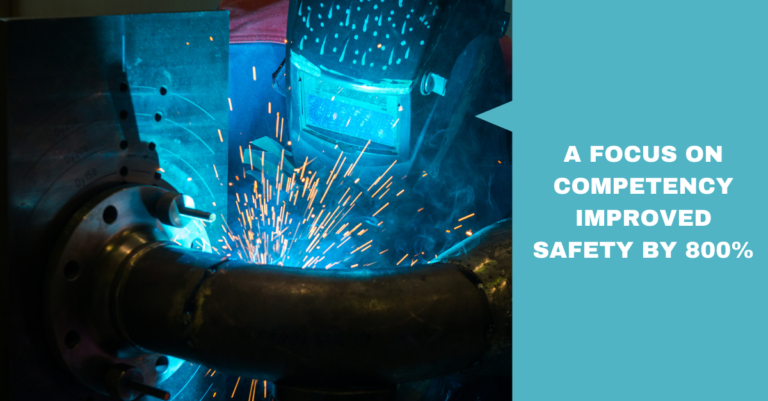Implementing Competencies in Your Business: Setting Up a Competency Working Group
Competency Implementation
If you’ve been keeping up with our blog, you should now have an understanding of what a competency is, how to organize them, what they can used for, the value of using them and how much detail is needed to make them effective. If these articles have convinced you that applying competency can help you solve some of your pressing business issues, great! The next question is… where do I start? The first step to implementing competency-based approaches was discussed in the scoping article. Step two is creating a “competency working group” to lead the effort.
The competency working group is tasked with overseeing, guiding and supporting the implementation of competencies in your organization. As such, it is important to have the right people involved in the working group. The working group should be comprised of people from all levels of your organization, and from multiple roles.
Senior Leaders

For a good working group, let’s start with senior leadership. This might seem obvious (or not?), but it is important for several reasons. The first is that senior leaders must be willing to provide financial and human capital support to the project. Implementing competencies will require not only the initial and ongoing financial support but also the right people, available at the right time (more on this later). The second, and perhaps more important reason, is that senior leadership must be seen as champions of the project. There can be no doubt in anyone’s mind that this project is important to leadership. We have seen a great project collapse due to being too unwieldy at the frontline, and equally importantly, a VP that did not support the project (even though the COO was a strong supporter), and therefore many frontline workers did not support the project. It was possible to trace a line from the frontline workers who did not believe in or support the project to the specific VP. It is therefore critical that the whole leadership team backs this project, not just in their words, but also in their actions.
Supervisors and Managers
Up next, you’ll need managers and supervisors represented. They are the people that will be using the competencies to deliver value to the organization. From hiring new employees to assessing current employees, they need to understand how they can use the competencies, and how the competencies will help them to deliver on key organizational metrics. Having a seat at the table will also ensure that any concerns they may have can be addressed so that they become champions for bringing competencies into the organization.
Job Incumbents/SMEs

Perhaps the most important group for implementing competencies are the subject matter experts (SMEs). These are the people who help develop the competencies and ensure that they are the most critical ones for the job. The SMEs should be job incumbents and, ideally, there should be a mix of top, mid, and low performers so that you will be able to see what each group does. By analyzing the differences between the groups, it is possible to determine what is needed to move mid performers to the top and how to move low performers to the middle. And, of course, how to incentivize top performers to keep performing at the top level.
Administrator
Once the competencies are implemented your organization will require an administrator. This person should come from the team that will be designated as the “owners” of the system. They will ensure it is being used, is up-to-date, and meets business goals. While this person may not be needed for the working group, having them onboard from the start will ensure they have a strong understanding of how, and for what, the competencies will be used. To this point, it is also strongly recommended that the various teams (HR, training and development, etc.) that will use the data that will be generated from the competencies be involved. Being involved from the start ensures they have input into how the competencies can meet their own business goals (e.g. the hiring function should provide input into what they need in order to use the competencies to hire the best candidates, the same for training, succession planning, etc.).
Technical Experts

One final addition to the working group: the technical expert to guide the whole process from start to finish. This may be a person inside your organization, or someone external. This person should understand not just your organizations goals, but also how to structure a competency, how to draw the information out of the SMEs, what you can and cannot do with the competencies, and much more. This person will have an outsized impact in determining if your organization can integrate competencies successfully or if it will become another failed management initiative that further jades your employees.
Support and Champions
As with all change projects, support across the entire organization is critical for the competencies to be accepted and provide meaningful and lasting value for the organization. The wider the support, the smoother the implementation. Widespread support requires having people at all levels of the company involved from the beginning and identifying champions at each level to bring excitement and reduce resistance. Each group mentioned in this article is responsible for bringing that excitement. Senior leaders are there to remove obstacles and provide energy. Managers and supervisors are there to ensure the competencies will help them deliver on organizational goals. Job incumbents (SMEs) will help develop the competencies and provide a better understanding of the job (never a bad thing!). The administrators (“owners”) will make sure that the competencies are being used (correctly) and provide help as needed. And the technical experts will help guide the entire group through the various stages to ensure that nothing is missed and that people are clear on what they will be able to do with the competencies.
Ultimately this is a journey, one that will lead to greatly improved outcomes, such as a better understanding of the job, the differences between top, mid, and bottom performers, reduced time to competence, improved quality and safety through improved individual performance, and so much more. Because this is a journey, take your time to set everything up well, to involve the correct people and to communicate often with the rest of your organization. Competencies can and will provide improved outcomes in productivity, quality, safety and cost, but they need to be implemented in a way that is acceptable to your organization and the culture that exists within it.
I wish you great success in becoming a competency-based organization!
Let us know in the comments below how your organization began their journey to becoming a competency-based organization.
Previous: Scoping a Competency Project
Read With Us
If you found this information useful, please subscribe to be notified for our next great post.

Competency and the Link to Engagement and Performance: If you’re not focused on competency… what ARE you focused on?
At WFSI, we’re laser-focused on competency as THE key to organizational performance. And while there are companies who say they have a competency focus, when you scratch a bit below the surface, you find that things aren’t necessarily what they may appear to be. One example we’ve seen repeatedly is in recruiting for “entry-level” positions….

Competency Testing in Recruiting: It’s Probably A LOT Easier Than You Think…
When we talk to companies about testing for competency during recruiting and selection, we often get pushback: “That’s too complicated!” “That’s too expensive!” “That takes too much time!” But does it really? We maintain that the biggest reason that companies don’t do really engage in competency testing is that they really don’t have a proper…

Graduate to Greatness
As a newly(ish) graduated student, I’ve learned that the job-hunting process can be a real rollercoaster ride. One moment you’re feeling confident and excited about a job opportunity, and the next you’re refreshing your email inbox every five seconds, anxiously waiting for a response. I know first-hand how challenging it can be to find a…








